- Author: Kathy Keatley Garvey
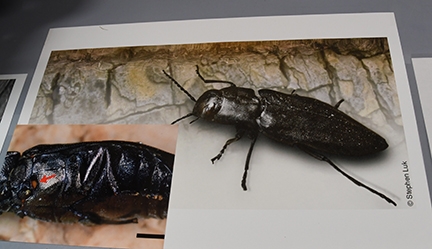
The fire beetles?
"Fire beetles in the genus Melanophila are sensitive to smoke and heat from smoldering trees after a fire," said Lynn Kimsey, director of the Bohart and professor of entomology at UC Davis. "They have a pair of pits on the body that detect heat. The beetles fly in large numbers to forest fires so they can lay their eggs in recently damaged trees.They will also crawl inside protective clothing of firefighters and bite them. Fire beetles will fly more than 50 miles to a fire."
Kimsey and animal biology major Crystal Homicz also told the crowd about smoke flies, which they described as "an odd group of platypezid flies use smoke plumes from burning trees to find mates. Swarms of 20 to 100 individuals can be seen 3 to 4 feet above the source of the smoke. They lay their eggs in burnt wood or soil near the burnt wood. Their larvae feed on burned plant parts and post-fire fungi."
Some insects can survive and thrive in extreme conditions beyond what humans could endure, they said. A sign read: "There are insects that can live in intense heat, cold, acidity or salinity, and some species are even attracted to fire. A wide variety of insects live in these extreme conditions, including flies, beetles, wasps and more."
Other signs informed the visitors of the insect peculiarities:
Heat
Many insects have a remarkable tolerance for high temperatures. No one knows how they survive and even thrive in these hot conditions. Several live at temperatures just below the boiling point of water.
- Desert Insects
Even more extreme are the desert insects that are active in sand dunes during the hottest part of the year. Sand surface temperatures can reach 180°F, but unlike hot springs, there is no water. These hot desert insects include sand wasps and ants. No one knows how they tolerate these temperatures and if you fell onto the sand, you would get second degree burns.
Sand Wasps
These wasps are active in our southern deserts in June and July. Air temperatures range between 100°F and 120°F with sand temperatures much higher. They collect dead insects to feed to their larvae, spending a great deal of time flying and resting on the superheated sand.
Ice
A number of very different kinds of insects spend all or part of their lives in temperatures below freezing. Some are so adapted they cannot survive temperatures about 50°F.
- Snow Fleas
Snow fleas belong to a family of scorpionflies called Boreidae. These are small, wingless predatory insects that feed on insects that they find on snow fields. The larvae feed in moss. They are found in the Sierra Nevada Mountains. - Snow Crickets
Grylloblattids, commonly known as snow crickets, are a group of extremophilic insects that live on mountaintops and on the edge of glaciers. They survive by eating insects that fall onto snow fields. Prolonged exposure to temperatures above 60°F. can be fatal, so just holding them in your hands could kill them.
Toxic Chemicals
A wide range of insects tolerate or even thrive on some quite toxic materials ranging from heavy metals to insecticides. These include orchid bees, lead cable borers and drugstore beetles.
- Male orchid bees in the species Eufriesea purpurata have been found to collect large amounts of DDT used to protect people living in rural homes in Brazil from malaria mosquitoes. The male bees use the DDT to make a pheromone to attract females. They were collected several other insecticides with no observable toxic effects.
- Lead Cable Borer can drill holes in the lead that sheaths telecommunications aerial telephone cables. This allows moisture to reach the copper wires and causes them to short, ruining the cable for 15 or 20 feet.
- Drugstore Beetles feed on a wide variety of dried plant products which are normally very toxic, including tobacco, spices, like cloves, habanero peppers and even strychnine. Their name derives from the period when drugstores compounded treatments for illnesses from plant material. These beetles are also major pests for the tobacco industry.
Hot Springs
Hot Spring Midges. One group of chironomid midges lives in hot springs with a temperature of 180°F. What's more remarkable is that in these hot conditions, there is little if any dissolved oxygen, yet the larvae do not breathe from the surface and obtain the oxygen they need from the water. One species is known from the hot spring pools of Yellowstone National Park.
Salt/Salinity
Halophiles are animals that live in highly salty environments. They must be able to tolerate the toxic effects of sodium and other chemicals in the water and maintain their internal water balance. Additionally, many of these salty inland waters have a pH close to that of ammonia.
- Brine Flies
Brine flies (family Ephydridae) thrive in extremely salty water. They live on the shoes of salt lakes, and lay their eggs in the water. One species lives in Mono Lake, which is three times as as salty as the ocean, and 11.6 times saltier than human blood! The adult flies live 3 to 5 days and they also can walk underwater and feed on algae. Local tribes ate the brine fly pupae.
Also during the open house, Bohart associates encouraged youngsters to participate in a family craft activity featuring colored yarn and cutout paper beetles. Red yarn indicated fire; blue yarn, the sky, and green yarn, vegetation. In addition, entomologist Jeff Smith, who curates the butterflies and moths, showed visitors part of the collection, and UC Davis students Karissa Merritt and Sara Guevara-Plunkett staffed the live "petting zoo," which includes Madagascar hissing cockroaches, walking sticks, and tarantulas.
Next Open House on Sept. 22
The next Bohart Museum open house, themed "Crafty Insects," is set from 1 to 4 p.m., Saturday, Sept. 22 at its location in Room 1124 of the Academic Surge Building on Crocker Lane. All open houses are free and family friendly.
"We will be having a two-way museum," said Tabatha Yang, education and outreach coordinator. "We will be displaying crafty--think cunning--insects and we are going to ask people to bring insect crafts that they have made, so all those folks who do felted, knitted, carved, sculpted crafters can share. Any and all hand-made, flea-shaped tea cozies are welcomed!"
The Bohart Museum houses a global collection of nearly eight million specimens. It is also the home of the seventh largest insect collection in North America, and the California Insect Survey, a storehouse of the insect biodiversity. In addition to the petting zoo, the museum features a year-around gift shop, which is stocked with T-shirts, sweatshirts, books, jewelry, posters, insect-collecting equipment and insect-themed candy.
The Bohart Museum's regular hours are from 9 a.m. to noon and 1 to 5 p.m. Mondays through Thursdays. It is closed to the public on Fridays, Saturdays and Sundays and on major holidays. Admission is free. More information on the Bohart Museum is available on the website or by contacting (530) 752-0493 or emailing bmuseum@ucdavis.edu
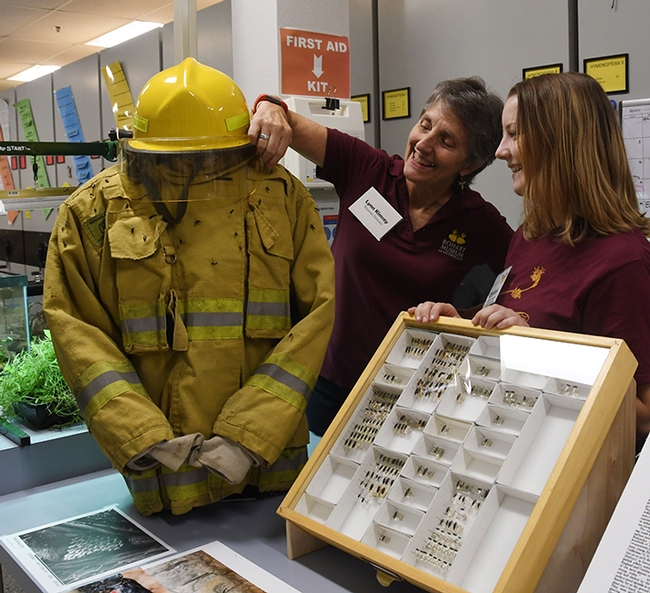
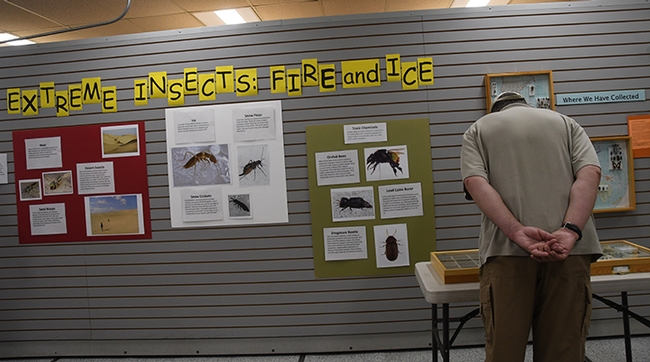


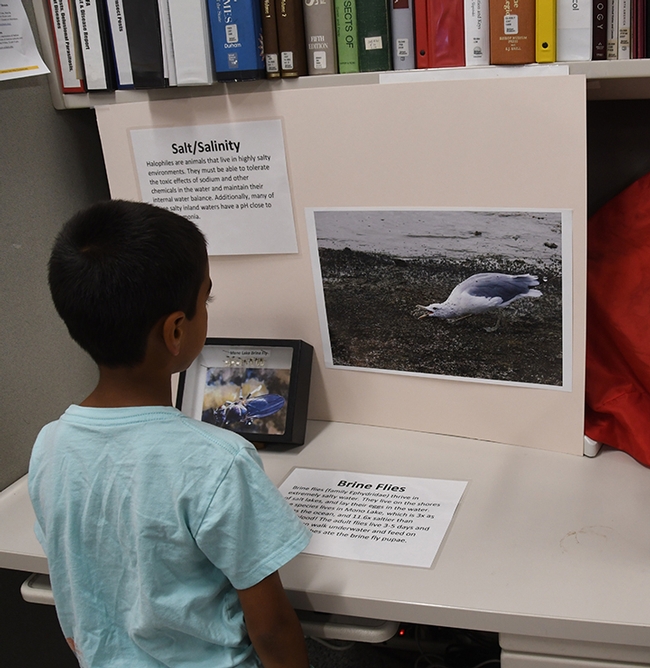
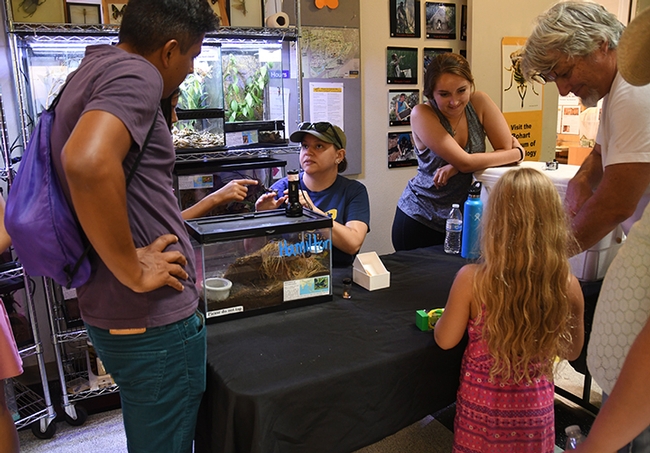


- Author: Kathy Keatley Garvey
Just a hoax. A fear-mongering hoax.
A so-called Facebook "public service announcement" on Aug. 21 that warned of a “new deadly spider species” spreading across the United States went viral, but it was all fake news. The images that the South Carolina man posted are of a woodlouse spider, Dysderca crocata, and it's neither new nor deadly to humans.
Unfortunately, many gullible people--probably many who cringe at the very sight of a spider!--believed the hoax. And even more unfortunately, the post went viral.
The South Carolina resident posted the "public service announcement" in all caps:
“THE SPIDER FROM HELL. FIVE PEOPLE HAVE DIED THIS WEEK DUE TO THE BITE OF THIS DEADLY SPIDER .THIS SPIDER WAS FIRST SEEN IN SOUTH CAROLINA IN JULY SINCE THEN IT HAS CAUSED DEATHS IN WEST VIRGINIA ,TENNESSEE AND MISSISSIPPI. ONE BITE FROM THIS SPIDER IS DEADLY. US GOVERNMENT WORKING ON AN ANTI VENOM AT THIS TIME PLEASE MAKE YOUR FAMILY AND FRIENDS AWARE.”
“This beast, Dysderca crocata, has been in most of North America for decades,” Art Shapiro, distinguished professor of evolution and ecology at the University of California, Davis, told us. “That includes California. It occurs mostly around buildings, especially if there is a mulched garden where its primary prey, isopods (rolypolies, pillbugs), live. I've had it at my place for years, but the number of pillbugs went way down during the drought and I haven't seen the spider lately."
“Needless to say, its bite is not lethal," Shapiro pointed out. "It has very large chelicerae and displays them menacingly if annoyed. According to the literature, bites (really rare) cause brief pain and occasionally local dermatitis, nothing more.”
Snopes.com, the fact-checking site, declared it a hoax on Aug. 21, a day later, but not before the damage was done. Today the Entomological Society of America (ESA) tweeted “FACT CHECK: Did a 'New Deadly Spider' Species Kill Several People in the U.S. in the Summer of 2018?” ESA answered the question succinctly: “Spoiler alert: No, it did not.”
No. It. Did. Not.
Snopes wrote: “Invasive and exotic animals have long been common subjects of scarelore, and messages alerting readers to the supposed threat posed by some new or previously unheard-of species often spread like wildfire across message boards, social networks and email inboxes. These posts typically take the form of a 'public service announcement' and are shared in good faith, and without hesitation, by people who sincerely wish to alert their friends and loved ones to an unfamiliar threat. For these reasons, the 'dangerous animal alert' is also a frequent source of misinformation, deliberate scare-mongering, or even downright trolling.”
It's a good idea to question these kinds of Facebook posts (note: where are you, Facebook monitors?)
Wikipedia informs us that "The woodlouse spider, Dysdera crocata, is a species of spider that preys primarily upon woodlice. Other common names refer to variations on the common name of its prey, including woodlouse hunter, sowbug hunter, sowbug killer, pillbug hunter and slater spider."
"Female specimens are 11–15 mm (0.43–0.59 in) long, while males are 9–10 mm (0.35–0.39 in).They have six eyes, a dark-red cephalothorax and legs, and a shiny (sometimes very shiny) yellow-brown abdomen. Notably, they have disproportionately large chelicerae for a spider of this size."
Native to the Mediterranean area, the woodlouse spider is found throughout much of the world, including North and South America, South Africa, Australia and New Zealand. It's found "under logs, rocks, bricks, and in leaf litter in warm places, often close to woodlice," Wikipedia relates. "They have also been found in houses. They spend the day in a silken retreat made to enclose crevices in, generally, partially decayed wood, but sometimes construct tent-like structures in indents of various large rocks. Woodlouse spiders hunt at night and do not spin webs."
There. You. Have. It.
"Too weird," commented Lynn Kimsey, director of the Bohart Museum of Entomology and professor of entomology at UC Davis, who fields lots of questions about insects and arachnids. "Funny that they picked this spider. Its ferocious looking but tiny and probably couldn't bite you even if it wanted to."
Sadly, Arachnophobia, or the extreme or rational fear of spiders, is very real--unlike the disturbing hoaxes that keep popping up on the Internet.
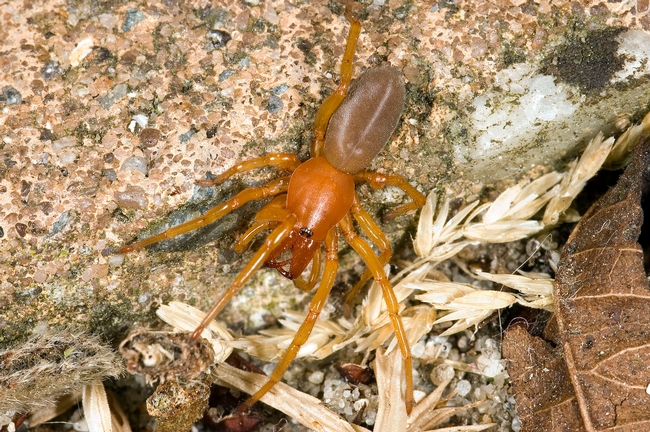
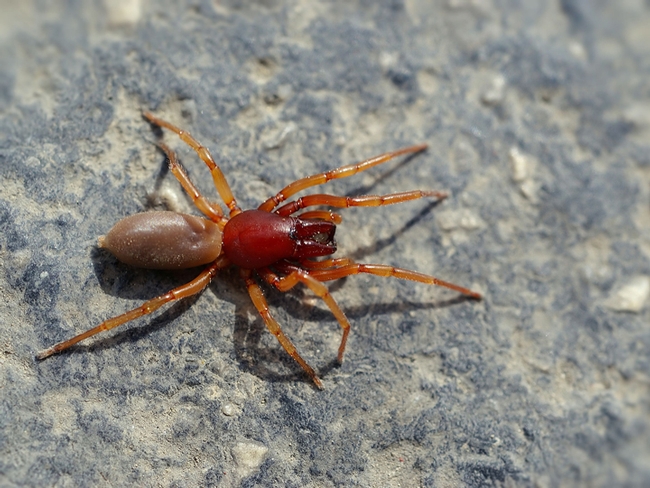
- Author: Kathy Keatley Garvey
It was bound to happen.
A "real" honey bee flying alongside "fake" bees on a bee crossing sign.
We photographed this honey bee (below) at 1/1000 of second (with a Nikon D500 and a 105mm lens with the f-stop set at 16 and ISO at 800), but honey bee flight is truly amazing.
Back in the 1934 French scientists August Magnan and André Sainte-Lague calculated that honey bees shouldn't be able to lift off, much less fly at all. However, they presumed bee wings are stable, like airplane wings, when in fact, they're not. Honey bees flap and rotate their wings some 240 times per second, according to research, "Short-Amplitude High-Frequency Wing Strokes Determine the Aerodynamics of Honeybee Flight," published in December 2005 in the Proceedings of theNational Academy of Sciences (PNAS).
The researchers, from the California Institute of Technology, pointed out that a fruit fly is 80 times smaller than a honey bee and flaps its wings 200 times each second, while the much larger honey bee flaps its wings 240 times every second. To stay aloft, a honey bee uses short wing strokes of less than 90 degrees and a high number of flaps.
"This flapping, along with the supple nature of the wings themselves, allows a bee--or any flying insect, for that matter--to create a vortex that lifts it into the air," explained David Biello in a Nov. 29, 2005 piece in Scientific American.
Or, technically, as the researchers wrote in their abstract: "Most insects are thought to fly by creating a leading-edge vortex that remains attached to the wing as it translates through a stroke. In the species examined so far, stroke amplitude is large, and most of the aerodynamic force is produced halfway through a stroke when translation velocities are highest. Here we demonstrate that honeybees use an alternative strategy, hovering with relatively low stroke amplitude (≈90°) and high wingbeat frequency (≈230 Hz). When measured on a dynamically scaled robot, the kinematics of honeybee wings generate prominent force peaks during the beginning, middle, and end of each stroke, indicating the importance of additional unsteady mechanisms at stroke reversal.
"When challenged to fly in low-density heliox, bees responded by maintaining nearly constant wingbeat frequency while increasing stroke amplitude by nearly 50%. We examined the aerodynamic consequences of this change in wing motion by using artificial kinematic patterns in which amplitude was systematically increased in 5° increments. To separate the aerodynamic effects of stroke velocity from those due to amplitude, we performed this analysis under both constant frequency and constant velocity conditions. The results indicate that unsteady forces during stroke reversal make a large contribution to net upward force during hovering but play a diminished role as the animal increases stroke amplitude and flight power. We suggest that the peculiar kinematics of bees may reflect either a specialization for increasing load capacity or a physiological limitation of their flight muscles."
And the (bee) beat goes on...even with that heavy load of nectar or pollen...
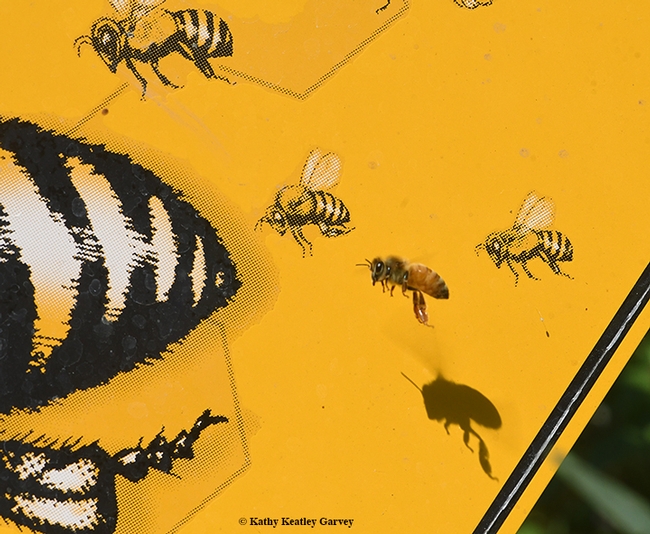
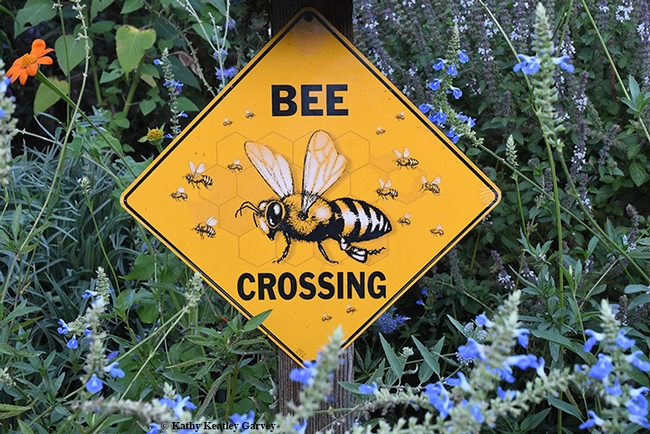
- Author: Kathy Keatley Garvey
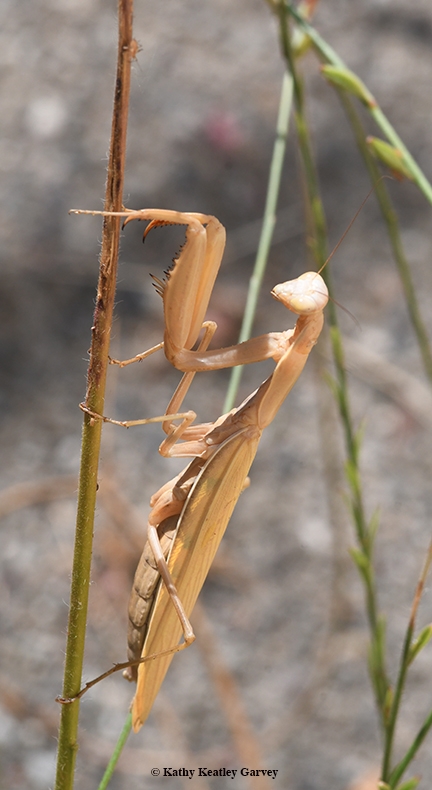
Water a bush or a plant frequently visited by bees and other pollinators, and if they're in there, they're likely to emerge.
Such was the case when a male praying mantis, Mantis religiosa, emerged from our pomegranate bush. No spray zone, please.
Frankly, he looked a bit irritated.
The next week a female M. religiosa emerged from a plant in our neighbor's yard. She, too, looked a bit irritated.
Praying mantis expert, Lohit Garikpati, a UC Davis entomology student who rears mantids and volunteers at the Bohart Museum of Entomology, confirmed their identities and gender.
The European mantis, or Mantis religiosa, belongs to the family Mantidae ("mantids"), the largest family in the order Mantodea. As all insect enthusiasts know, they derive their common name by their distinctive posture of "praying." (Some entomologists like to think of them as "preying" mantids.)
The females are usually larger and heavier but the antennae and eyes of the males outsize the females.
"Along with the forward directed compound eyes there are also simple eyes to be found on the head," Wikipedia tells us. "These three dorsal ocelli are also more pronounced in males than in females.Male individuals are often found to be more active and agile whereas females are physically more powerful. One of the outcomes of these morphological variations is that only males and very young females are able to fly. Adult females are generally too large and heavy for their wings to enable a take-off."
In Germany, M. religiosa is listed as ‘threatened' on the German Red List. That means finders aren't supposed to be keepers: don't catch it or keep it as a pet.
The status of the male and female mantids in our neighborhood? They're still there in their respective yards. If they meet, however, the male may lose his head in the well documented phenonomen of sexual cannibalism...nature's way of better survivability--not for the male but for his offspring!
"Eating her mate provides the female with a lot of nutrients she doesn't have to hunt for," according to Wikipedia. "She has a prey item available that is bigger than the prey she would be able to catch in the manner she usually hunts. The meal also takes place during or shortly after she was fertilized giving her more resources for the faster production of a large ootheca with large eggs, increasing the chance of her offspring to survive. Males have also been known to be more attracted to heavier, well-nourished females for this reason."
There's a lesson in there somewhere!
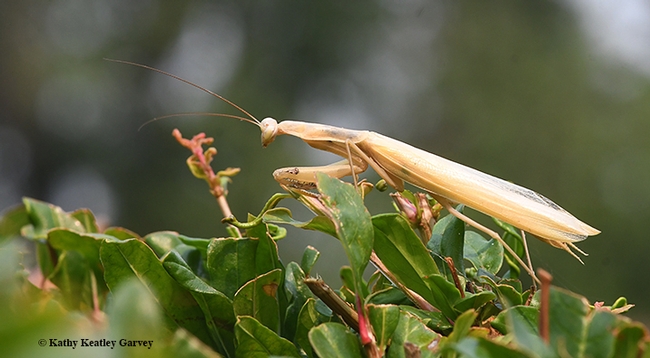
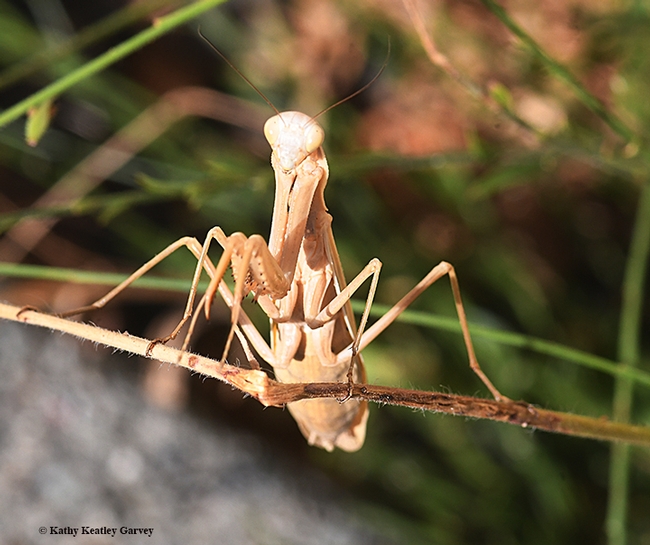
- Author: Kathy Keatley Garvey

Well, ecologists Richard "Rick" Karban Mikaela Huntzinger of the UC Davis Department of Entomology and Nematology did.
For years, they've been observing meadow spittlebugs along the California coastline. Now they're "declining rapidly or vanishing from their previous habitats," the UC Davis ecologists wrote in newly published research in the journal Ecology.
Professor Karban, who has maintained a study site at Bodega Marine Reserve in central California since 1982, links the decrease to temperature.
“I've been surveying seaside daisies for spittlebugs at Bodega Bay every spring for the past 35 years and found that the number of these highly visible and previously widespread insects was related to temperature,” Karban said.
However, since the spring of 2006, the UC Davis researchers have found no spittle masses on the Bodega Bay Reserve's coastal prairie. Other researchers have also detailed how sensitive spittlebugs are to environmental conditions.
The meadow spittlebugs, Philaenus spumarius, thrive in cool, moist habitats and suck plant juices, feeding on xylem fluid and excreting most of it as a foamy white mass known as spittle. The mass protects them from desiccation, predation and parasitism. In past years, Karban and Huntzinger found an abundance of meadow spittlebugs feeding on seaside daisy (Erigeron glaucus) and the non-native ice plant (Carpobrotus edulus).

The Karban-Huntzinger research paper, “Decline of Meadow Spittlebugs, a Previously Abundant Insect, Along the California Coast,” is especially important in light of alarming research in Germany dubbed “Insect Armageddon.” In that research, published last October in the journal PLOS ONE, German scientists investigated aerial insect biomass across 96 protected preserves in the country. They found that three-quarters of flying insects had disappeared over the past 25 years.
In their Ecology article, the authors published a California coastline map detailing the changing spittlebug distribution and disappearance. In 2001, it appeared that their distribution was mainly shifting northward. By 2017 and 2018, it became clear that they were disappearing over large portions of their range.
The earth's climate is warming at a rate of 0.2 degrees Celsius per decade over the past 30 year, according to the National Aeronautics and Space Administration. California's coast has also experienced climate change; the recent severely hot years in the state have also been severely dry. Models of future climates predict that the warming trend will continue and that variability in conditions, for example, droughts, also will increase in frequency and severity.
“Whether the altered climates we face globally will change our ecological communities will depend on how able individual species are to adapt to the new conditions,” the UC Davis researchers explained. “Since meadow spittlebugs were widespread and abundant, we might have assumed that they would not be threatened by climate change. What we have found is that even this species has not been able to adjust physiologically or ecologically. If the pattern they show is common, we may also see surprising changes in the abundance or distribution of other insects as well. These changes are likely to have dramatic and unexpected effects on the functioning of ecosystems.”
Interesting enough, the same week that the UC Davis researchers published their paper, UC Berkeley researchers published their work on the declining bird population in the desert along the Nevada-California border, and opined that climate change could be to blame.
Wrote reporter Henry Bream of the Las Vegas Review Journal in an Aug. 15tth piece titled "Nevada-California Desert ‘half empty' of Birds after Population Collapse":
"Bird populations have collapsed in the desert along the Nevada-California border, and climate change could be to blame, according to a new study by scientists at the University of California, Berkeley."
"Over the past century, the number of bird species has fallen by an average of 43 percent at survey sites across an area larger than New York state. Almost a third of species are less common and widespread now than they once were throughout the region."
The study's authors, professor Steven Beissinger and doctoral student Kelly Iknayan, pointed to less hospitable conditions in the Mojave as the probable cause, Bream wrote.
Iknayan related that “California deserts have already experienced quite a bit of drying and warming because of climate change, and this might be enough to push birds over the edge. It seems like we are losing part of the desert ecosystem.”
Climate change appears to be pushing a number of species "over the edge."




